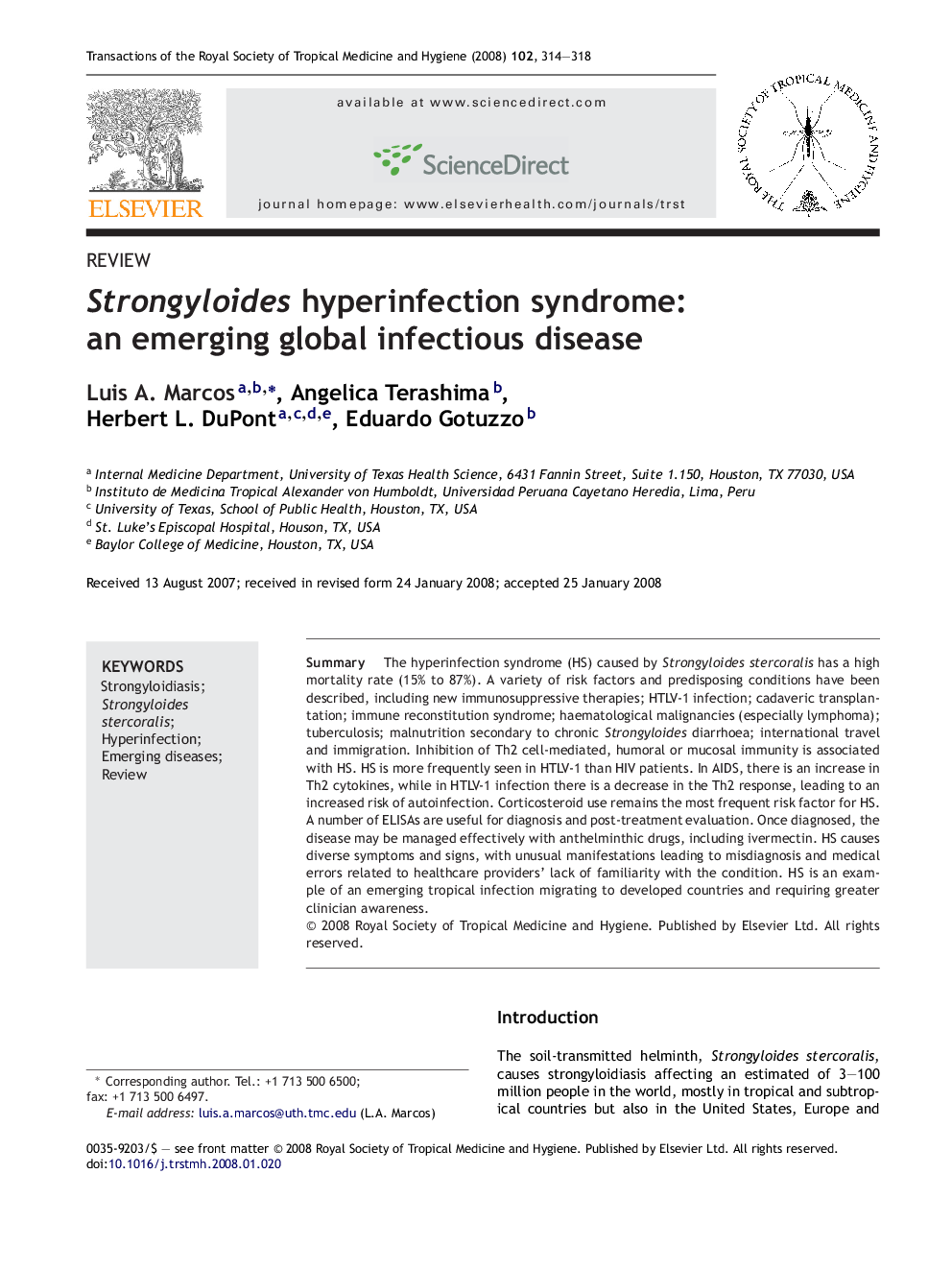| Article ID | Journal | Published Year | Pages | File Type |
|---|---|---|---|---|
| 6137707 | Transactions of the Royal Society of Tropical Medicine and Hygiene | 2008 | 5 Pages |
Abstract
The hyperinfection syndrome (HS) caused by Strongyloides stercoralis has a high mortality rate (15% to 87%). A variety of risk factors and predisposing conditions have been described, including new immunosuppressive therapies; HTLV-1 infection; cadaveric transplantation; immune reconstitution syndrome; haematological malignancies (especially lymphoma); tuberculosis; malnutrition secondary to chronic Strongyloides diarrhoea; international travel and immigration. Inhibition of Th2 cell-mediated, humoral or mucosal immunity is associated with HS. HS is more frequently seen in HTLV-1 than HIV patients. In AIDS, there is an increase in Th2 cytokines, while in HTLV-1 infection there is a decrease in the Th2 response, leading to an increased risk of autoinfection. Corticosteroid use remains the most frequent risk factor for HS. A number of ELISAs are useful for diagnosis and post-treatment evaluation. Once diagnosed, the disease may be managed effectively with anthelminthic drugs, including ivermectin. HS causes diverse symptoms and signs, with unusual manifestations leading to misdiagnosis and medical errors related to healthcare providers' lack of familiarity with the condition. HS is an example of an emerging tropical infection migrating to developed countries and requiring greater clinician awareness.
Related Topics
Life Sciences
Immunology and Microbiology
Applied Microbiology and Biotechnology
Authors
Luis A. Marcos, Angelica Terashima, Herbert L. DuPont, Eduardo Gotuzzo,
